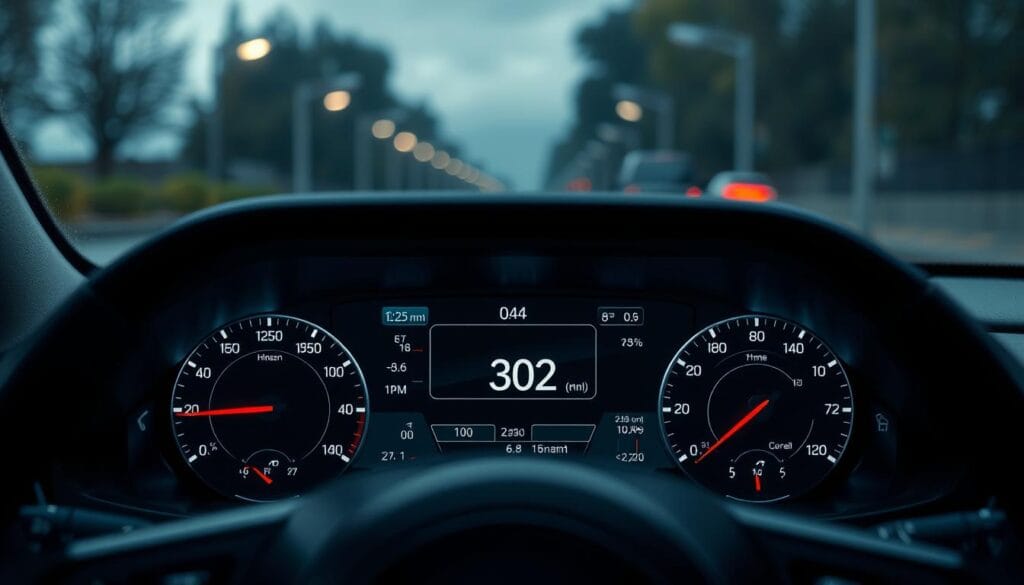Telematics is revolutionizing how car insurance rates are determined. By analyzing driving habits, these programs offer a dynamic pricing model that rewards safe drivers. This approach uses data collected through mobile apps or hardware devices to assess behavior on the road.
On average, drivers in the U.S. cover 13,500 miles annually. Telematics programs can help reduce insurance costs by 5-40%, depending on driving patterns. However, it’s important to note that some users may see their premiums increase if their habits are deemed risky.
Major companies like Progressive, Allstate, and Geico have adopted these systems. Their programs, such as Progressive Snapshot and Allstate Drivewise, use advanced technology to monitor speed, braking, and mileage. This data-driven approach ensures fairer pricing based on actual performance.
While telematics offers significant savings, it also raises questions about privacy and data usage. Understanding how these programs work is essential for making informed decisions. For more insights, visit our blog.
Key Takeaways
- Telematics adjusts insurance rates based on driving behavior.
- Potential savings range from 5% to 40% for safe drivers.
- Programs use mobile apps or hardware devices to collect data.
- Some users may face premium increases if driving habits are risky.
- Major providers include Progressive, Allstate, and Geico.
What Is Telematics in Auto Insurance?
Modern insurance programs now rely on telematics to assess and reward safe driving habits. This technology integrates telecommunications and informatics to collect data on how a vehicle is operated. By analyzing this information, insurers can offer personalized rates based on actual driving behavior.
How Telematics Tracks Your Driving
Telematics systems use a combination of GPS, accelerometers, and gyroscopes to monitor driving patterns. These tools work together to track speed, braking, and acceleration in real-time. For example, hard braking—defined as deceleration greater than 20mph/s—is flagged as a risky behavior.
Most programs rely on smartphone apps, which use built-in sensors to collect data. However, some insurers use OBD-II devices that plug into a vehicle’s diagnostic port. These devices can monitor over 150 parameters, providing a comprehensive view of driving habits.
Types of Data Collected by Insurers
Insurance companies gather several categories of data to evaluate risk. These include geolocation, acceleration patterns, and braking intensity. Temporal patterns, such as the time of day a vehicle is driven, are also analyzed. This granular approach ensures fairer pricing for drivers.
For instance, Allstate’s Drivewise program uses a three-factor model to assess driving behavior. This includes monitoring cornering forces and device interaction. Such detailed analysis helps insurers identify safe drivers and reward them accordingly.
To learn more about how telematics can benefit you, visit our solutions page.
How Telematics in Auto Insurance Lowers Your Premiums

Drivers can now leverage technology to reduce their premiums significantly. Usage-based programs analyze driving habits to offer personalized rates. These systems reward safe drivers with discounts, making them an attractive option for many.
Safe Driving Discounts Explained
Insurers use data to identify safe drivers and reward them with discounts. For example, State Farm’s Drive Safe & Save program offers up to 30% off for those with good driving behaviors. This approach encourages safer practices on the road.
Programs like Progressive Snapshot have helped drivers save an average of $231 annually. These savings are achieved by monitoring factors like speed, braking, and mileage. Drivers who maintain consistent, safe habits benefit the most.
Pay-Per-Mile vs. Behavior-Based Programs
Pay-per-mile programs, such as Allstate Milewise, charge a base rate plus a variable cost per mile. In Illinois, the base rate is $1.10 per day, with an additional $0.06 per mile. This model is ideal for low-mileage drivers who don’t use their vehicles frequently.
Behavior-based programs, on the other hand, focus on how a vehicle is driven. They analyze acceleration, braking, and cornering forces to assess risk. While these programs can lead to significant savings, risky behaviors may result in higher premiums.
For more insights on maximizing your savings, visit our guide on financial strategies.
The Pros and Cons of Usage-Based Insurance
Usage-based insurance programs are reshaping how premiums are calculated. These systems analyze driving habits to offer personalized rates, providing benefits for low-risk drivers. However, they also come with potential drawbacks that users should consider.
Benefits for Low-Risk Drivers
Low-risk drivers can save significantly with usage-based programs. For example, Allstate Drivewise offers discounts of up to 40% for safe driving habits. Retirees and remote workers, who typically drive less, often see the most savings.
Programs like Nationwide SmartRide have a 4.2/5 satisfaction rating, according to J.D. Power. These systems also provide crash reconstruction capabilities, which can be helpful in accident scenarios.
Potential Drawbacks and Rate Increases
Not all drivers benefit from these programs. High-risk drivers may face premium increases of up to 22%. Additionally, 14% of users dispute the accuracy of the data collected, which can impact their rates.
State regulations also vary. For instance, California allows only mileage monitoring, while New York permits full data collection. These differences can affect how programs are implemented and their overall effectiveness.
For more insights on financial strategies, visit our guide on choosing the right advisor.
How to Qualify for the Best Telematics Discounts

Driving habits play a crucial role in determining eligibility for telematics discounts. By adopting safe and consistent behaviors, drivers can maximize their savings and reduce premiums. These programs analyze factors like braking, acceleration, and time of day to assess risk and reward safe practices.
Ideal Driving Habits for Maximum Savings
To qualify for the best discounts, drivers should maintain smooth acceleration and braking patterns. For instance, deceleration should remain below 15 mph/s to avoid being flagged as risky behavior1. Additionally, limiting night driving to less than 12% of total mileage can further enhance eligibility for savings2.
Minimizing phone interaction while driving is also critical. Programs monitor distractions, and interactions should not exceed 2 seconds per 10 minutes3. Implementing these habits ensures a favorable assessment and maximizes potential discounts.
Who Benefits Most from Telematics Programs?
Certain groups see significant savings with telematics programs. Retirees, for example, save an average of 63% due to reduced mileage and safer driving habits4. Remote workers also benefit, with savings averaging 58% as they drive less frequently4.
Urban drivers can optimize their habits by using geofencing strategies. These tactics focus on reducing hard acceleration in high-risk areas, improving safety scores3. Multi-vehicle households can also benefit by analyzing individual driving behaviors to optimize usage and reduce costs4.
| Driving Metric | Optimal Threshold | Impact on Discounts |
|---|---|---|
| Braking | Reduces risk score | |
| Night Driving | Increases eligibility | |
| Phone Interaction | Minimizes distractions |
For more tips on maximizing savings, visit our guide on financial strategies.
Top Auto Insurance Companies with Telematics Programs

Leading insurance companies are adopting advanced programs to reward safe driving habits. These systems use driving data to offer personalized rates, making them a popular choice for many drivers. Each provider has unique features and benefits tailored to different needs.
Allstate’s Drivewise and Milewise
Allstate offers two distinct programs: Drivewise and Milewise. Drivewise is available in 49 states and uses a mobile app to track driving behavior. It provides an instant discount upon sign-up and up to 40% annual savings.
Milewise, on the other hand, is a pay-per-mile program. Rates vary by state, ranging from $0.04 to $0.12 per mile. This model is ideal for low-mileage drivers who want to save on premiums.
Geico’s DriveEasy: Features and Savings
Geico’s DriveEasy program is available in 37 states and Washington, D.C. It uses an app-based architecture to monitor driving habits. The program includes a family sharing feature, making it a great option for households with multiple drivers.
DriveEasy offers up to 25% in discounts for safe driving. It also features predictive crash detection, with a response time of less than two minutes. This ensures quick assistance in case of an accident.
Progressive’s Snapshot: What to Expect
Progressive’s Snapshot program is available in all states except California. It supports both smartphone apps and company-supplied devices, ensuring compatibility with 98% of vehicles manufactured after 1996.
The program includes a Snapshot Road Test to evaluate potential savings. Drivers can save an average of $231 annually by maintaining safe driving habits. For more details on these usage-based insurance programs, visit our guide.
Privacy Concerns and Telematics Data Security

Data collection in usage-based programs raises important questions about privacy and security. As insurers gather detailed driving data, consumers must understand how their information is used and protected. This section explores the lifecycle of data collection, storage, and sharing, along with the regulations safeguarding consumer rights.
How Insurers Use Your Driving Data
Insurers collect data through mobile apps or hardware devices to assess driving behavior. This includes speed, braking, and acceleration patterns. Once collected, the information is stored securely and analyzed to determine personalized rates.
However, 43% of programs share this data with third parties, such as vehicle manufacturers or data brokers. Encryption standards like AES-256 and TLS 1.3 are often used to protect sensitive information. Despite these measures, breaches can occur, making robust security protocols essential.
State Regulations and Your Rights
State laws play a crucial role in protecting consumer privacy. For example, the CA Consumer Privacy Act allows users to opt out of data sales. Similarly, NY Regulation 194 limits data retention to seven years.
In 18 states, insurers must disclose how driving data is used. Consumers also have the right to delete their information under certain laws. For more insights on ethical data practices, visit our blog.
Understanding these regulations and security measures is vital for making informed decisions. For additional resources on financial strategies, explore our AI impact guide.
Conclusion
Adopting technology-driven programs can transform how drivers manage their costs and safety. These systems analyze driving behavior to offer personalized rates, making them a valuable tool for saving money. However, success depends on individual factors like driving profile and privacy tolerance.
Average savings range from 5% to 40%, but results vary based on driving habits. State-specific regulations also play a role, so it’s essential to understand local laws before enrolling. Choosing the right provider involves comparing features and ensuring compatibility with your needs.
Periodic re-evaluation is crucial to maximize benefits. Emerging trends, such as AI-driven risk prediction, are shaping the future of these programs. By staying informed and proactive, drivers can make the most of these innovative solutions.

